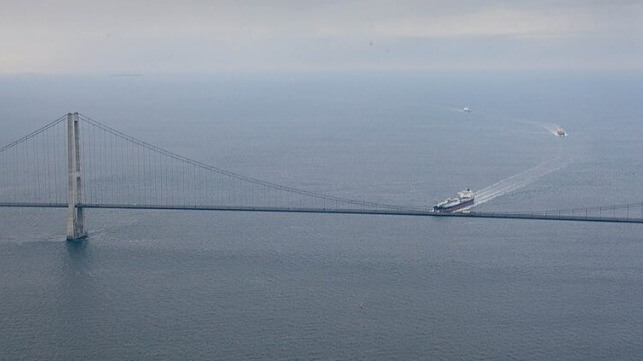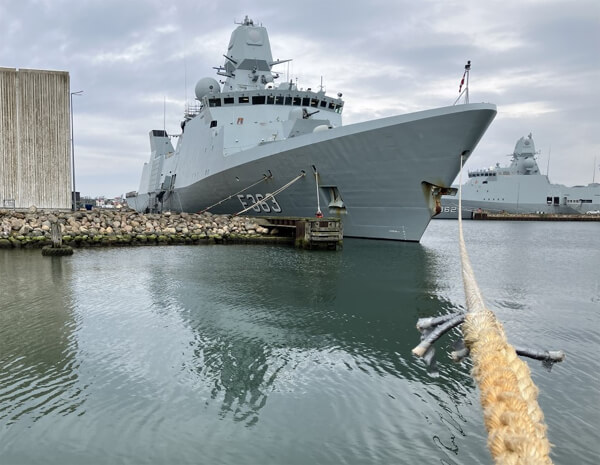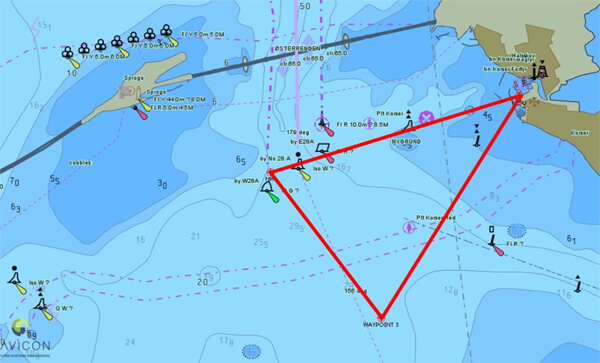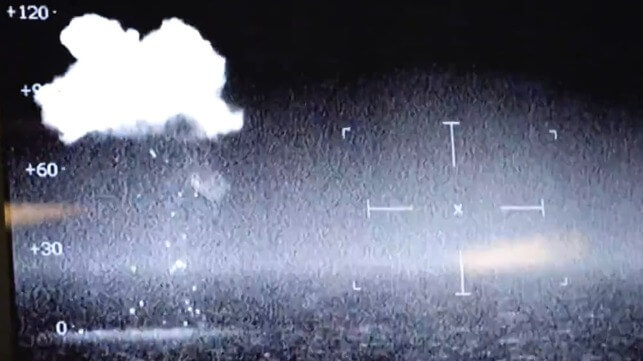SNAFU
Busy Shipping Lane off Denmark Closed Due to Malfunctioning Harpoon Missile

A portion of the Great Belt Strait off the coast of Denmark was closed to shipping and air traffic on Thursday after Denmark’s Defense Command and Maritime Authority warned of the dangers from a malfunctioning Harpoon missile. After having suspended traffic for hours, they announced the waterway would reopen at 2000 Thursday night. It came as the second embarrassing incident reported in 24 hours which on Wednesday night led to the dismissal of the country’s chief of defense.
The Defense Command issued a statement Thursday morning reporting the incident to the police and Danish Maritime Authority while advising that “ships in the direction of the danger zone are notified and asked to wait for the problem to be resolved.” The airspace is also closed in the area around Korsor, a town in southeast Denmark near the passage between the North Sea and the Baltic. It is also home to one of the country’s leading naval bases.
The incident happened at the end of several weeks of naval exercises involving the Danish Navy and other members of NATO. The exercise was due to end tomorrow, April 5, and today included a test of the missile system aboard the Danish frigate Niels Juel which is docked at Naval Station Korsør.
The navy reported the booster portion of the rocket had been activated and malfunctioned meaning they were unable (they thought) to deactivate the missile. The missile, which carries 150 kg of explosives, had not been armed and according to the Navy only the booster was activated and there was no danger of an explosion.

Niels Juel frigate at the naval base (Defense Command file photo)
“Until the booster is disabled, there is a risk that the missile could launch and fly several kilometers away,” Defense Command warned. “Specialists are on their way to solve the problem.”
The danger area was being estimated up to approximately four miles to the south of the base and the command says the missile would not reach a height over 1,000 meters (3,300 feet) above the water. However, it did reach into the strait between the islands of Zeeland and Funen which is the primary shipping channel in the area. The danger did not include the Great Belt Bridge with reports that cars and trains were proceeding normally. Ships however have been advised to anchor and not enter the zone.

Danger zone intersecting major shipping lanes (Defense Command)
Defense Command reported late on Thursday that specialists from the Ministry of Defense's Material and Procurement Agency worked during the afternoon to investigate whether it was an arming of the launch vehicle or whether it was an electronic error message. The specialists carried out a number of different tests after which Defense Command said, "it was established that the booster was not armed and that there is no longer a risk that the missile can be launched."
News of this latest incident comes a day after the Danish media leaked a report that another frigate the Iver Huitfeldt suffered systems failures while it was in the Red Sea. The vessel’s air defense system was reported to have been down for 30 minutes while they were engaging Houthi drones and several of the shells fired exploded prematurely. The frigate was later recalled early from the Red Sea.
Denmark is in the midst of a rapid increase in defense spending in part to meet the NATO target of two percent of GDP and due to the increased threats from Russia after the invasion of Ukraine. On Wednesday night, Denmark’s Defense Minister Troels Lund Poulsen reported that he had lost trust in the Chief of Defense General Flemming Lentfer. He dismissed the general after the reports that the incident with the Iver Huitfeldt had not been reported to the defense minister for nearly a month.
Top photo by L-BBE in 2013 -- CC BY 3.0 DEED
Report: Danish Frigate's Weapons Malfunctioned During Houthi Drone Attack

The Danish frigate Ivar Huitfeldt is on her way home a bit early from her air-defense mission in the Red Sea. The warship shot down four Houthi drones while in theater - but her commander was concerned about her ability to shoot down too many more, according to Danish outlet Olfi.
The paper obtained a message from the Huitfeldt's commanding officer that described multiple shortcomings in its weapons systems. The frigate's air-defense missile system experienced a glitch in the middle of a hostile engagement on March 9, apparently because of a software issue in the interface between its fire-control radar and its combat management system. The crew switched to a backup radar and worked around the problem, according to Dutch maritime outlet Marine Schepen, but their most capable top-end radar remained unusable for half an hour.
"Our clear understanding is that the issue has been known for years without the necessary sense of urgency to resolve the problem," the CO said in the message.
Ivar Huitfeldt also ran into apparent problems with ammunition quality. It successfully downed the drones with its 76mm deck gun, a common auto-feeding model that is used by navies worldwide. But about half of the proximity-fused rounds exploded just after leaving the muzzle, and never reached anywhere near the drones, according to the CO.
"All shells in standard combat equipment are more than 30 years old, they have been retrofitted with a '2005 proximity fuze' . . . which appears to be unsuitable for actual combat," he wrote.
Since the warship had to use far more of these shells to down the targets, the CO warned that the Huitfeldt risked running out of ammunition at an inopportune moment, potentially reducing the ship's survivability.
Ivar Huitfeldt was expected to remain in the Red Sea through mid-April, but by March 25, she had transited the Suez Canal and arrived at Souda Bay, Crete. After resupply and shore leave, Huitfeldt returned to Denmark, arriving earlier this week.
The frigate's technical issues have turned into a political firestorm for Denmark's government. The defense minister, Troels Lund Poulsen, first learned of the problem when media inquired about it on Monday night, according to DR. He has relieved Chief of Defense Gen. Flemming Lentfer of command, effective Wednesday.
Danish Navy insiders told DR that the crew of the Huitfeldt had had to borrow the 76mm guns for their warship from other frigates before departure, and could not rule out that this may have increased the risk of a malfunction.
No comments:
Post a Comment